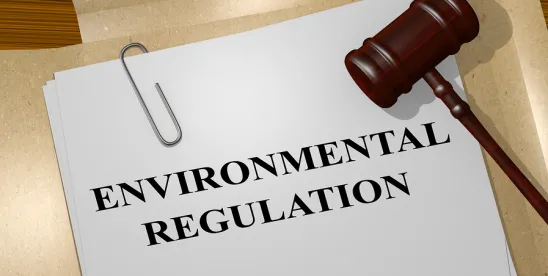On October 16, 2017, US EPA, under Administrator Scott Pruitt, proposed the repeal of the Clean Power Plan (CPP), and the Agency is accepting comments on the repeal until April 26, 2018. Following a review of the statute’s language, surrounding policy, and legislative history, US EPA proposed to “return to a reading of CAA section 111(a)(1) … as being limited to emission reduction measures that can be applied to or at an individual stationary source.” US EPA characterized the CPP as relying on measures unable to be applied to a single source. The effect, according to the Agency, is that the CPP relies on “actions taken across the electric grid, rather than actions taken at and applied to individual units.” The practical implications are that coal-fired units under the CPP would face a decision to switch to gas-fired units or renewable energy sources.
The impetus for the proposed repeal stems from Executive Order 13783 signed by President Trump on March 28, 2017. The Order calls for agencies to “immediately review existing regulations that potentially burden the development or use of domestically produced energy resources,” including the CPP. Specifically, the Order directs the US EPA Administrator to “immediately take all steps necessary to review the final rules set forth in subsection (b)(i) and (b)(ii) of this section [the Clean Power Plan]….and, if appropriate…as soon as practicable, suspend, revise, or rescind the guidance, or publish for notice and comment proposed rules.” On December 15, 2017, US EPA publicly released a timeline for the rule repealing the CPP, with a target deadline of October 2018.
Recently, however, US EPA expressed a willingness to consider a replacement to the CPP if the repeal moves forward, publishing an Advanced Notice of Proposed Rulemaking (ANPRM) on December 28, 2017. In the notice, US EPA requested comments on “what the EPA should include in a potential new existing source regulation under CAA section 111(d).” In particular, the Agency focused on determination of the Best System of Emission Reduction (BSER), the application of GHG emission limits to a source-specific level, the role of state regulatory agencies, and interactions between the New Source Review (NSR) program and potential GHG emission guidelines. In its request for comments, the Agency expressly directed that submitters should assume the interpretation of CAA section 111(a)(1) means limited to emission reduction measures “applied to or at a stationary source, at a source-specific level.” The focus on source-specific levels for GHG emission limits indicates an approach within the fenceline, and the Agency specifically cited North Carolina’s draft plan as an example of such unit-level emission standards. The comment period for the ANPRM is open until February 26, 2018.
US EPA’s Public Hearing in West Virginia and the Announcement of Additional Public Hearings
On November 28 and 29, 2017, US EPA held a public hearing in Charleston, West Virginia concerning the proposed repeal of the CPP. Attendees at the public hearing represented a variety of views, ranging from industry stakeholders to public health advocates. Initially, it seemed this would be the only public hearing on the repeal compared to the eleven public hearings the Agency held prior to the original rule’s proposal and the four public hearings during the subsequent comment period. However, the Agency issued a press release in early December announcing three more hearings to be held in San Francisco, California; Gillette, Wyoming; and Kansas City, Missouri. Several states, including Delaware, New York, and Maryland, also held their own, independent hearings in response.
D.C. Circuit Case Still Pending in the Background
In the midst of the proposed repeal, one can almost forget there is still a consolidated case pending in the D.C. Circuit Court of Appeals and subject to recurring abeyance periods. On February 9, 2016, the US Supreme Court granted a stay of the rule until the D.C. Circuit Court of Appeals could provide judicial review. The D.C. Circuit Court of Appeals held oral argument before an en banc court on September 27, 2016, but the court has not made a decision since the oral arguments. Due to the pending review prompted by Executive Order 13783, US EPA filed a motion with the D.C. Circuit Court of Appeals on March 28, 2017, requesting that the court hold the consolidated case in abeyance until the review and potential rulemaking took place. The motion was granted and the case remains in abeyance with US EPA submitting status reports every 30 days. The Agency submitted its most recent report and request for further abeyance on January 10, 2018.
Conclusion
In the past year, US EPA under the Trump Administration has shifted from advocating for a full repeal of the CPP without replacement to signaling its willingness to consider a replacement plan. The recent publication of the ANPRM only further supports that willingness. A replacement plan could include source-specific, within-the-fenceline emission limitations, increased involvement of state regulatory agencies, and consideration of interactions with the NSR program. The next steps for US EPA will include organizing the forthcoming public hearings and analyzing and responding to comments submitted both on the proposed repeal of the CPP and the ANPRM. We will continue to keep readers apprised on how the US EPA’s actions progress.




 />i
/>i

